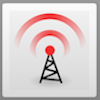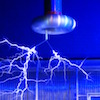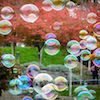Friday Flyer - December 11, 2020

Spotlight on the NOvA Experiment
NOvA is an acronym that contains an acronym: NuMI Off-axis ve Appearance experiment. The NuMI (Neutrinos at the Main Injector) beam of neutrinos starts out 150 feet below the surface at Fermilab and is aimed downward at a 3.3-degree angle. Before leaving Fermilab, the neutrino beam passes through the NOvA near detector, where most of the neutrinos detected are muon neutrinos. In less than three milliseconds, the neutrinos in the beam make the 500-mile trip to northern Minnesota where the much larger (14,000-ton) far detector sits. A few neutrinos in the beam interact with the liquid scintillator in the far detector, leaving a burst of charged particles that scientists detect to learn about neutrino oscillations and interactions. This week, Shane had the chance to speak with University of Minnesota physicist and QuarkNet mentor Greg Pawloski about NOvA.

News from QuarkNet Central
Registration for International Masterclasses continues. We've removed the December 7 deadline and made some additions; read all about it and find registration links in last week's IMC Circular. Masterclass leaders, please sign up as soon as you can, as masterclass videoconferences start February 11 for CERN and February 16 for Fermilab.
QuarkNet Educational Discussions (QEDs) have concluded for 2020, but stay tuned as these discussions will pick up again in January!
Beamline for Schools 2021 is on! Get basic information and a registration link in the announcement and find more resources at the Useful Documents page.
Last week's Friday Flyer highlighted Making Tracks I, a recent addition to the Data Activities Portfolio. With a name like that, you may not be surprised that we've also added one called Making Tracks II, an activity that enables students to analyze tracks in a bubble chamber. Check it out!

Physics Experiment Roundup
DZero reaches a milestone: 500 publications by the collaboration. The first dates back to January of 1993, and there are certainly more to come! (By the way, Calculate the Top Quark Mass uses data from DZero.) Meanwhile, DUNE (Deep Underground Neutrino Experiment) publishes its first physics results from its prototype detector.
The most recent story in the LHC Physics at Ten series highlights precision measurements of the Standard Model made at the Large Hadron Collider. Looking toward the future, leading scientists discuss The Next Big Machine: Does CERN Need Another Supercollider?

Resources
Can we see LHC neutrinos in the IceCube detector, located near the South Pole? Tommaso Dorigo comes up with an answer! In another article, Dorigo addresses the question, "What is a LHC signal more cool than the Higgs?"
With many of us spending a lot of time at home these days, you may be looking for more books to read. Symmetry is here to help, with a list of top physics books of the year.
Do we live in a simulated multiverse? Don Lincoln discusses this possibility in his latest Subatomic Story. From the BBC: Why physics suggests other dimensions exist (H/T to Marge Bardeen).

Just for Fun
We know QuarkNet teachers have many talents. A recent example: Fred Nelson, former Manhattan (Kansas) teacher and member of the original KSU QuarkNet group, won $21K on Jeopardy! (H/T to Tim Bolton, KSU.)
And while on the topic of geniuses, check out the list of real-life geniuses who appeared over the years on the TV show Big Bang Theory, compiled by Wonders of Physics.
QuarkNet Staff:
Mark Adams: adams@fnal.gov
Ken Cecire: kcecire@nd.edu
Spencer Pasero: spasero@fnal.gov
Shane Wood: swood5@nd.edu

